How to Get Listed on Google Discover
The ever-changing algorithms and new platforms in the online world make it imperative for brands and content creators who want to increase their visibility to keep up with constant innovations. One of the most remarkable platforms for visibility is Google Discover. So, what is Google Discover and why is it so important for SEO? In this blog post, we will discuss in detail what Google Discover is, how it can be effective in SEO, and how you can make the most of this platform.
What is Google Discover?
Google Discover is a platform launched by Google in 2018 that algorithmically delivers content based on user behavior, interests, and search history. In Discover, the content stream is displayed only according to the user's interests and without entering any queries. As a product of the search engine Google, Discover works more like a social media platform, displaying personalized content.

Although we are used to seeing Discover on mobile devices, Google announced that we will soon be able to see Discover on desktop devices.
It is important to remember that the focus of Google Discover is always on the user. The platform automatically delivers personalized content based on the following factors
- Search History
- Browser history
- Application activity
- Location history and settings (linked to Google account settings)
- Topics followed
SEO and Google Discover
The importance of Google Discover for SEO is undeniable. Discover is a platform where any website, not just news sites, can increase its visibility and gain significant organic traffic.
Let's take a deeper dive into what Google Discover means for SEO and how you can leverage its potential by offering a personalized feed, and content based on users' interests, bypassing the need for search queries.
How Can We Perform Better on Discover?
There are some things we need to consider to get more visibility and traction on Discover. Let's examine the steps you can take to increase the likelihood of your content finding a place on this platform, using Google Documents.
Quality, Engaging, and Trending Content Production
The Discover area is shaped by trends. Therefore, it is important not to miss the trends. Creating original and engaging content that provides value to users is another important aspect. Use different types of content, such as articles, videos, images, charts, tables, and lists, to create content that will engage the target audience.
Misleading or exaggerated details should not be used in headlines, snippets, or images to increase appeal. Important information should not be deliberately withheld to arouse curiosity. In summary, make headlines descriptive.
As a footnote: It has been observed that the "open graph title" structure also affects Discover. In other words, the title you use in the open graph title structure may be also seen on the Discover side.
Avoid Clickbait
Google also states in its documentation that 'clickbait' should be avoided.
"Use page titles that capture the essence of the content but are not clickbait."
If we consider that we are writing content for real users and that we are creating it to benefit them, we will not encounter this problem.
Image and Video Optimization
When using high-quality images and videos in content, it is important to include appropriate alt texts and descriptions. Using descriptive text not only for alt texts but also for file names will contribute to your visual optimization.
Google explains the use of images that can help you get listed in Discovery as follows:
"Include compelling, high-quality images in your content, especially large images that are more likely to attract visitors from Explore. Large images should be at least 1,200 pixels wide and should be enabled with the max-image-preview:large setting or using AMP. Avoid using a site logo in your image."
According to this statement, you can control images for your important content. If the width value is not within 1,200 pixels, you can edit your images according to this recommendation.
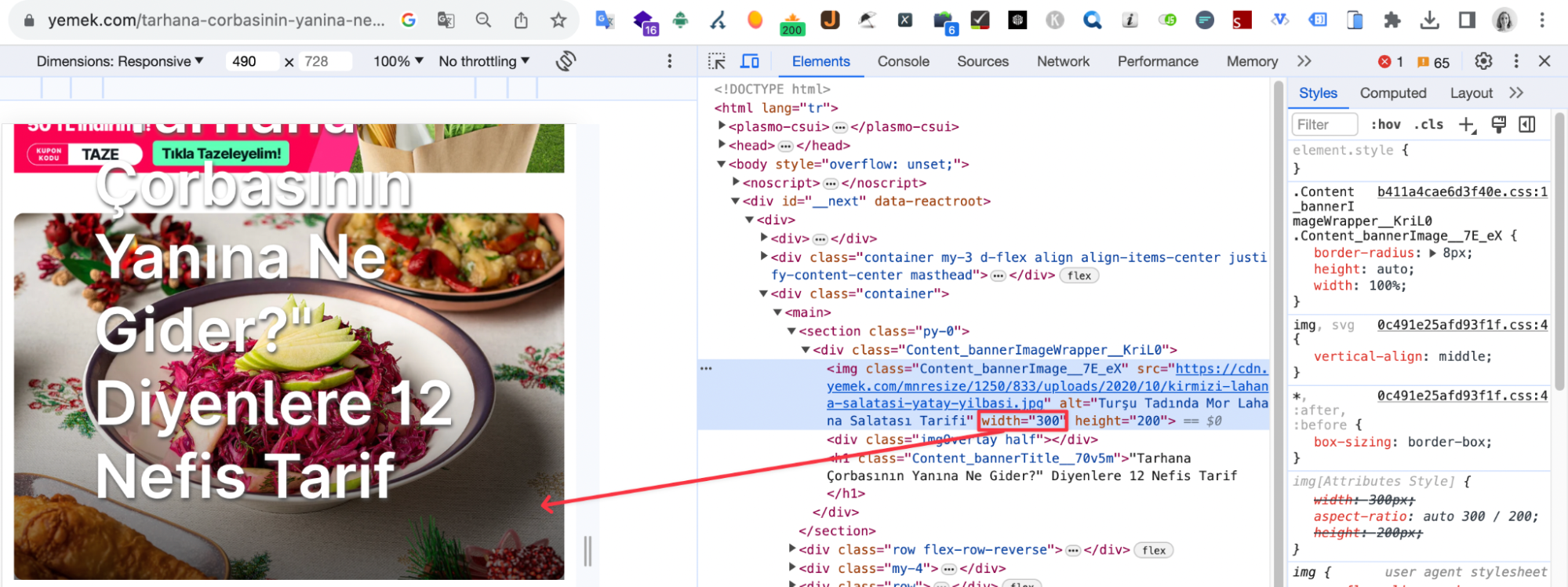
To elaborate on the use of max-image-preview, if you don't want Google to use larger thumbnails when AMP pages and the standard version of an article are presented in Search or Explore, you can specify standard or none as the max-image-preview value.
An example usage:
<meta name="robots" content="max-image-preview:standard">
This will transfer small images to the larger image on the right, i.e. the full-width image, as in the screenshot below. It is reported that some have experienced this process to increase the click-through rate by two or three times.
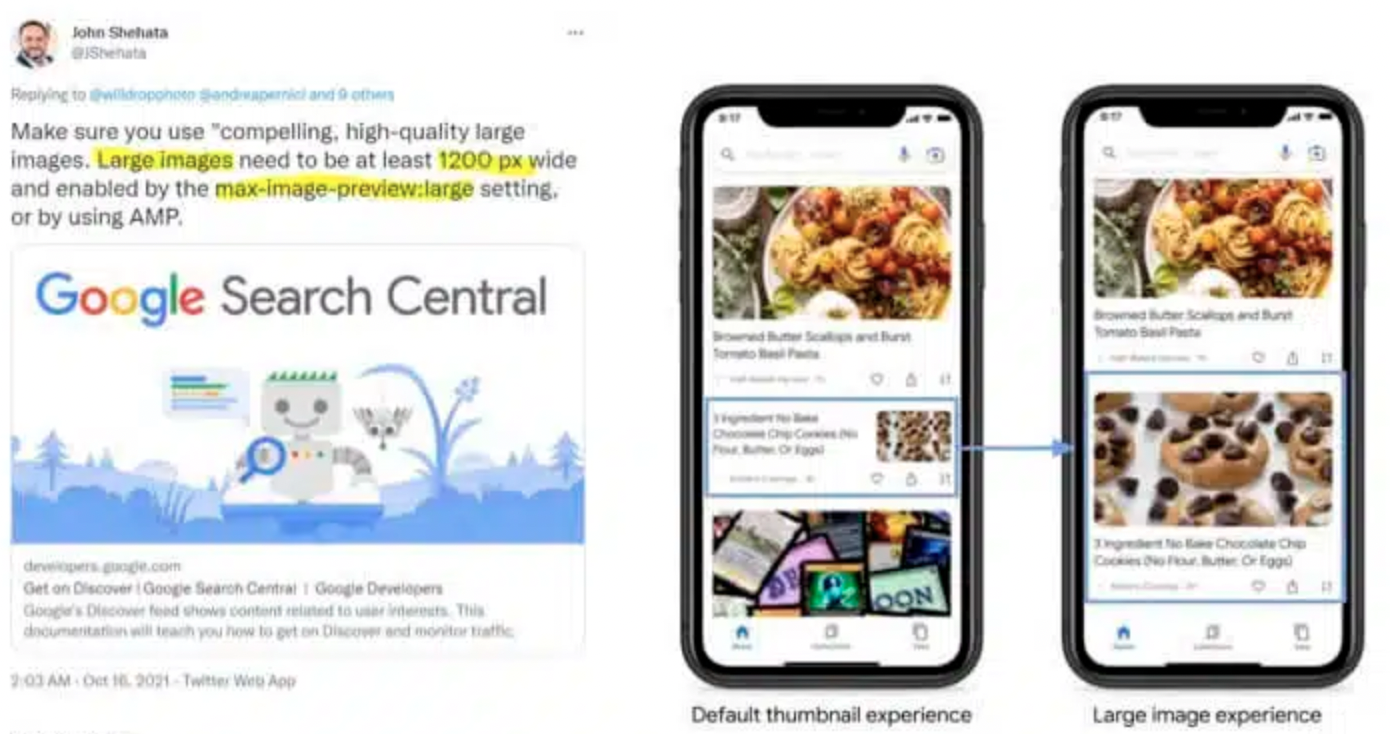
For Hero images, it is recommended to use an aspect ratio of 16:9.
EEAT
The credibility of the content is very important for the user. Providing information about the publication, publisher, and/or the company behind it will make your content stronger in terms of EEAT. Content that is strong in terms of EEAT is also more likely to be listed on Discover.

For more trust and transparency, you may also consider including the author's contact information.
It is also a good idea to indicate the publication and update dates on the content page.

Structured Data Markup
Using structured data markup in your content will help search engines better understand the context of your content.
Indicating various information such as author information, content publishing dates, etc., which we mentioned in the previous article, with structured data markup will also be a plus point for content quality.
Content Update
Regular updates and innovations should be made to keep content relevant and up-to-date. Especially updating evergreen content will have a positive impact on your performance. An example graph after the update in evergreen content is as follows.
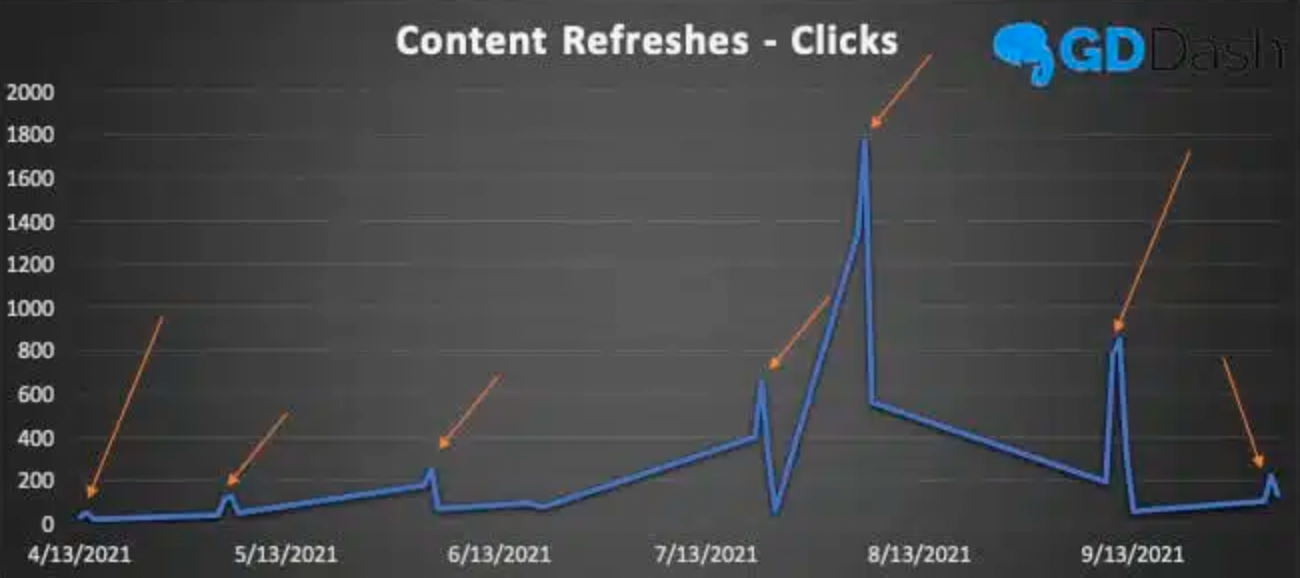
For example, let's say we have a news site. If we create content about the minimum wage increase in 2023, we need to update our content according to the change in 2024.
Using Knowledge Graph
Users can only follow your brand/website on Discover if it is included as a knowledge graph.
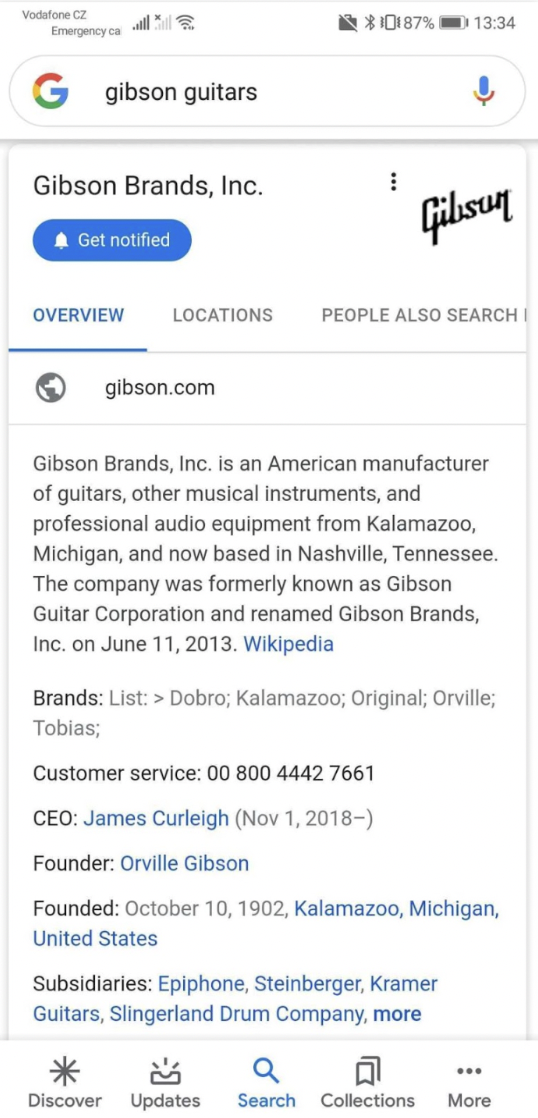
In this way, your users will be more aware of your content if they follow your site.
In addition, Discover performance and social media performance are positively correlated. Therefore, increasing your social media interaction will positively affect your Discover performance.

Although there is no "direct" way to get listed on Discover, we have mentioned some improvements that can contribute to this. With these improvements, you will improve the quality of your content and you will likely improve your performance on Discover.
Performance Measurement
After developing your content, you may want to evaluate how it performs on Discover.
In Google Search Console, under the Discover heading, you can observe the performance of the content only in Discover.
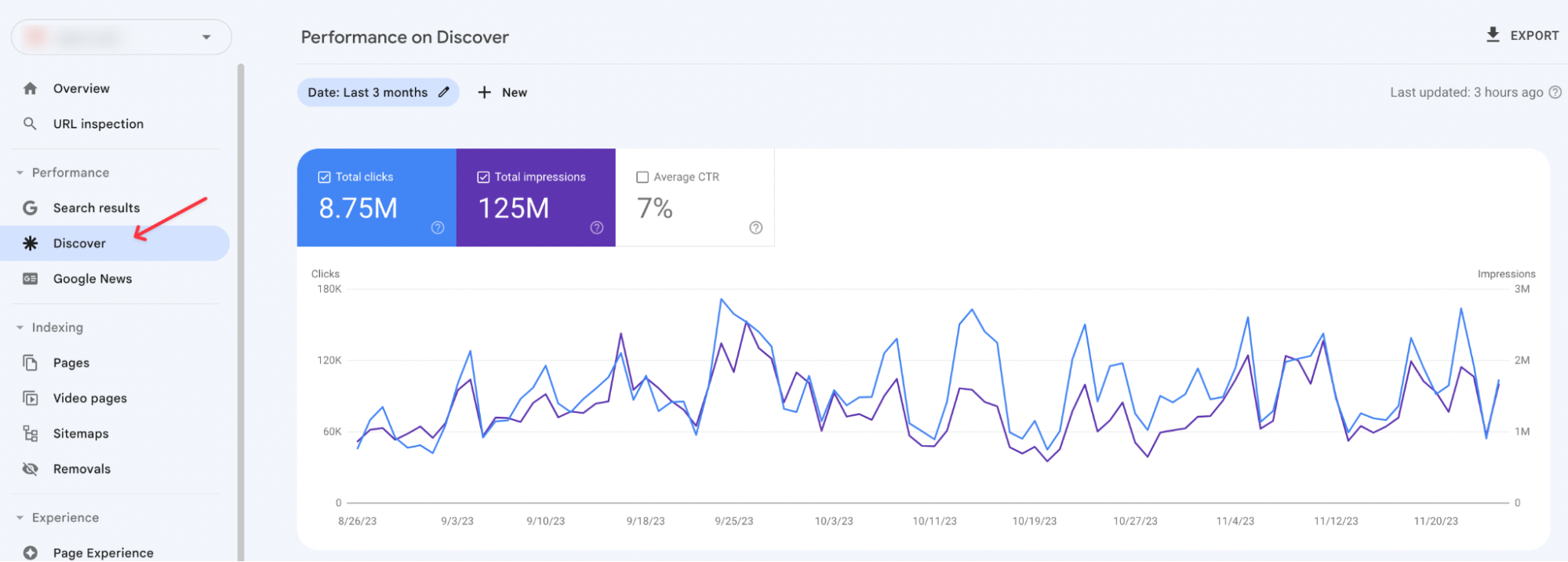
If you are not seeing reports for Discover in your Search Console account, it is because your website has not reached the minimum impression threshold in Discover. According to the tests performed, this minimum threshold was observed to be approximately 1,000 impressions over 16 months.
This content was created by Zülal Hoşgör, SEO Specialist at Zeo.
Sources:
https://searchengineland.com/6-tactics-to-rank-better-in-google-discover-376385
https://ahrefs.com/blog/google-discover/
https://www.searchenginejournal.com/best-google-discover-content/414620/















